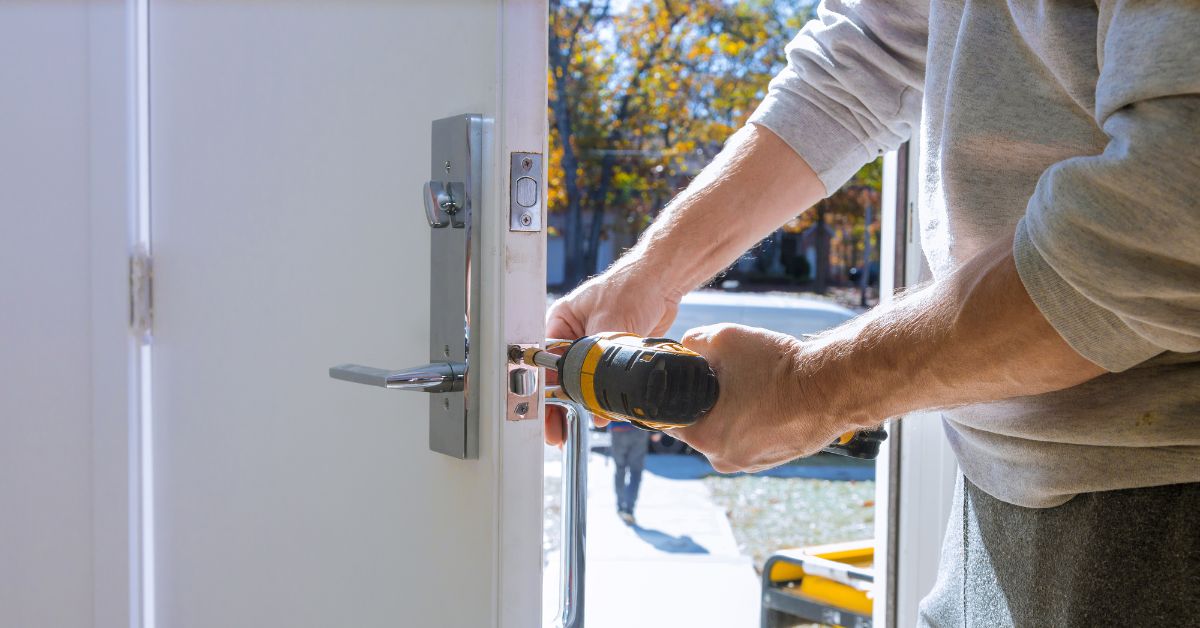Table of Contents
The front door of your home serves many purposes. It is the primary entry and exit point and is crucial to your home’s security and energy efficiency. Recognizing when your front door needs replacement is imperative to maintain a safe, comfortable, and energy-efficient living home.
It’s important to recognize when your front door needs replacing. This article will outline what to look for when determining if your front door needs to be replaced.
Signs That Your Front Door Needs Replacement
Persistent Drafts
When you start feeling persistent drafts around your front door, it’s a sign that your door is losing its insulating properties. Persistent drafts occur when gaps between the door and the frame allow outside air to enter your home. These drafts create an uncomfortable living environment and force your HVAC system to work overtime, spiking energy bills.
Increased Energy Bills
An inefficient door that allows air to seep in or out will undoubtedly impact your energy consumption. If you notice an unexplainable increase in your energy bills, it might be due to your front door not providing a proper seal. Energy loss through the front door can be responsible for up to 30% of your energy waste, making it crucial to address this issue promptly.
Uncomfortable Living Spaces
Drafts from a faulty door can lead to uncomfortable temperatures within your living spaces. During cooler months, these drafts can make your home feel chilly, regardless of how high you turn up the heat, and vice versa in the summer. This unpredictability can make your living environment uncomfortable.
Visible Damages
Over time, doors may sustain a variety of visible damages. If your door has noticeable signs of wear and tear, such as cracks, warping, rust, or decay, it indicates that it needs replacement. These damages affect the aesthetic appeal and impair the door’s structural integrity, making it less secure and more susceptible to further damage.
Warping
Doors, especially wooden ones, tend to warp due to exposure to varying weather conditions and humidity levels. Warped doors don’t fit well in their frames. This can make them difficult to open or close, creating gaps that allow drafts to enter.
Rust and Decay
Metal doors can develop rust over time. Wood doors might show signs of rot and decay. Both rust and decay weaken the door’s structure, reducing its lifespan and effectiveness in providing security and insulation.
Difficult To Operate
A door that has become challenging to open, close, or lock may have alignment issues, which could be due to a warped or damaged frame. Difficulty in operation is not just an inconvenience but is also a security risk, as a door that doesn’t close properly can easily be forced open.
Outdated Style
Style might be a secondary concern for some, but an outdated door can significantly detract from your home’s aesthetic appeal and value. If your door looks worn out and outdated, replacing it can refresh and enhance the appearance of your entire home frontage.
Security Issues
A front door’s primary function is to secure your home. If there are visible damages or the door feels flimsy and not as secure as it once was, it’s time to consider a replacement. A compromised door poses a significant security risk, making your home an easy target for intruders.
Front Door Replacement With AAA Screen & Window
By being vigilant and proactive, you can promptly address any issues your front door may have, ensuring your home remains secure, energy-efficient, and comfortable. When the time comes to replace your front door, AAA Screen & Window in Atlanta, Georgia, stands out as a leading local front door replacement company.

